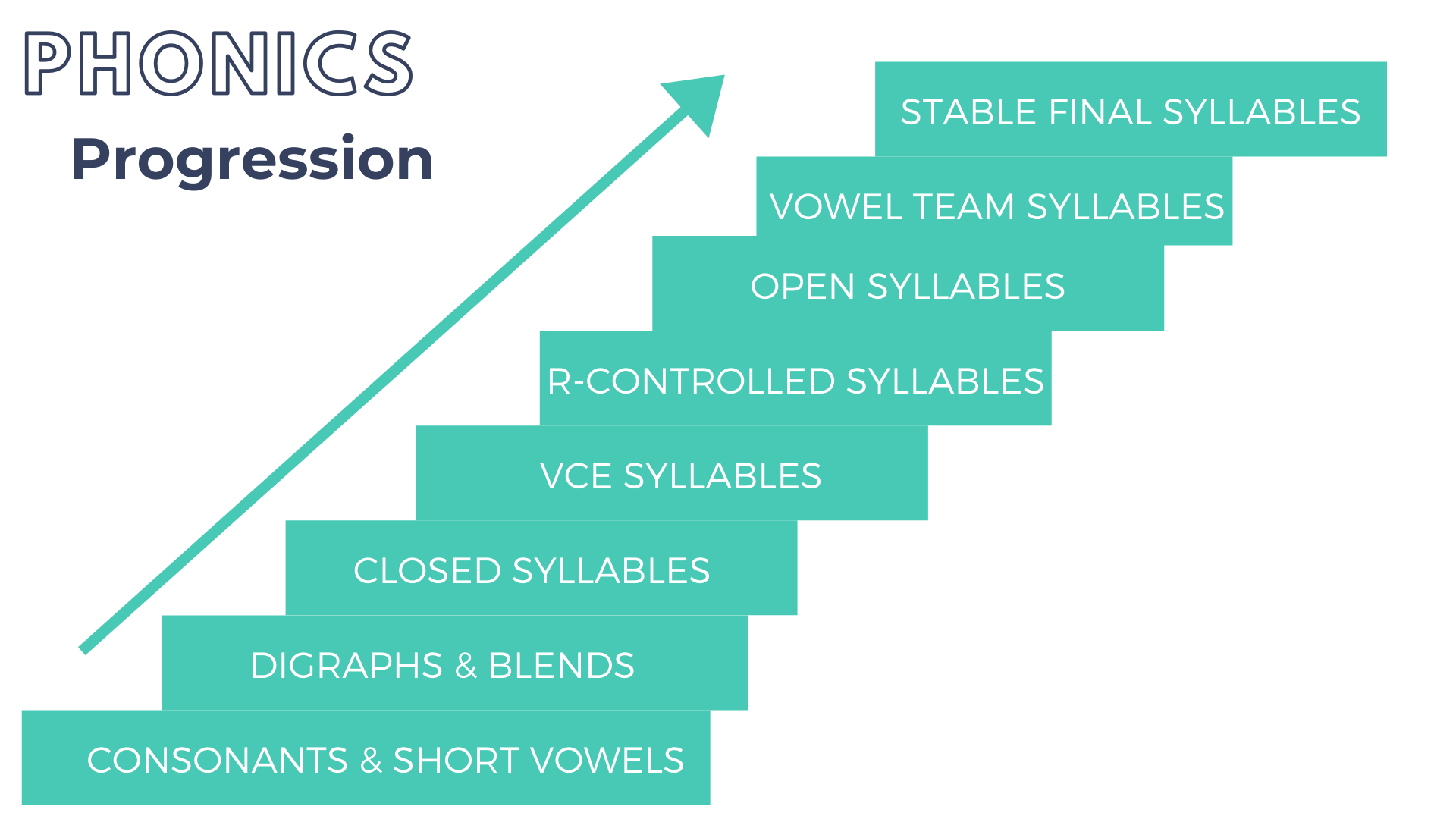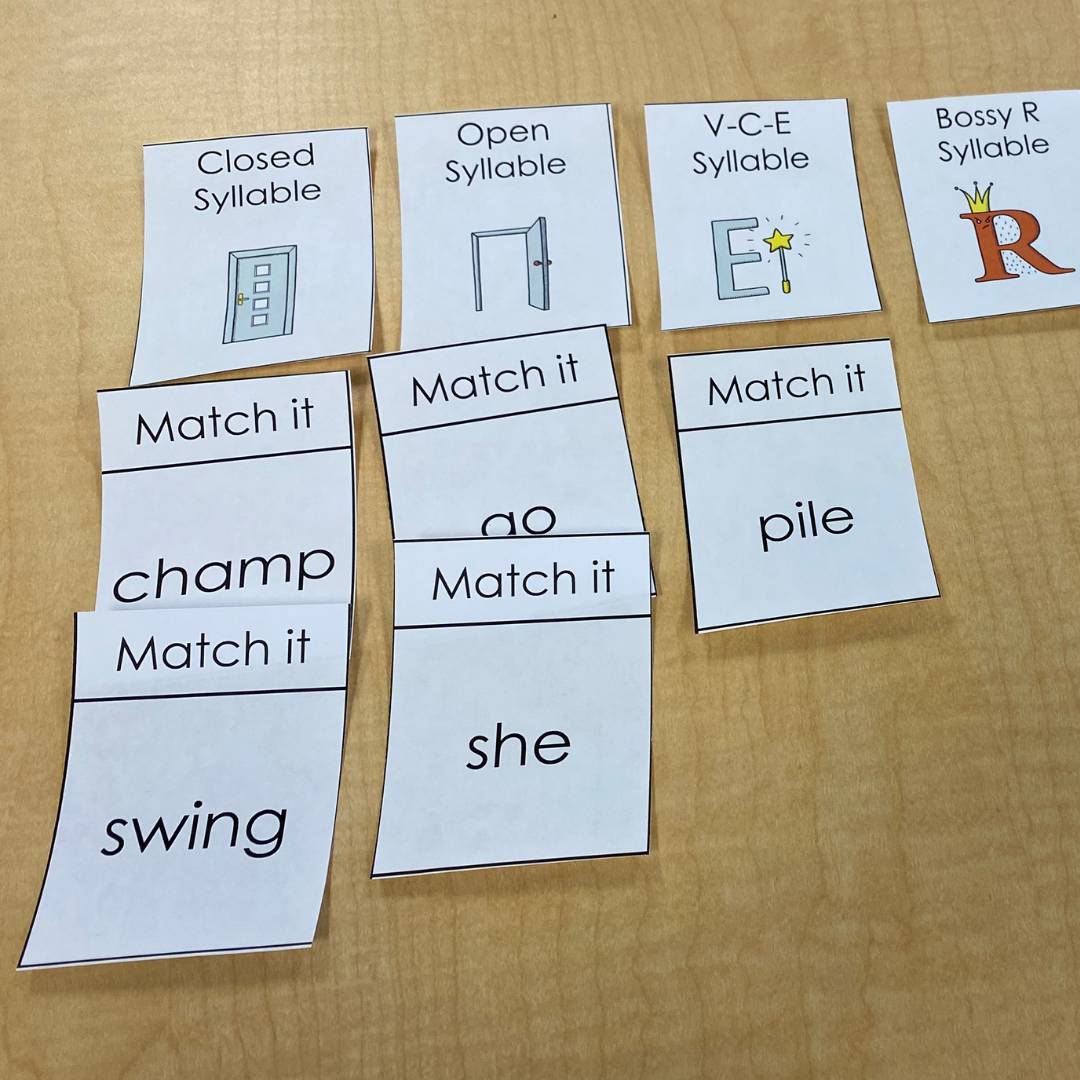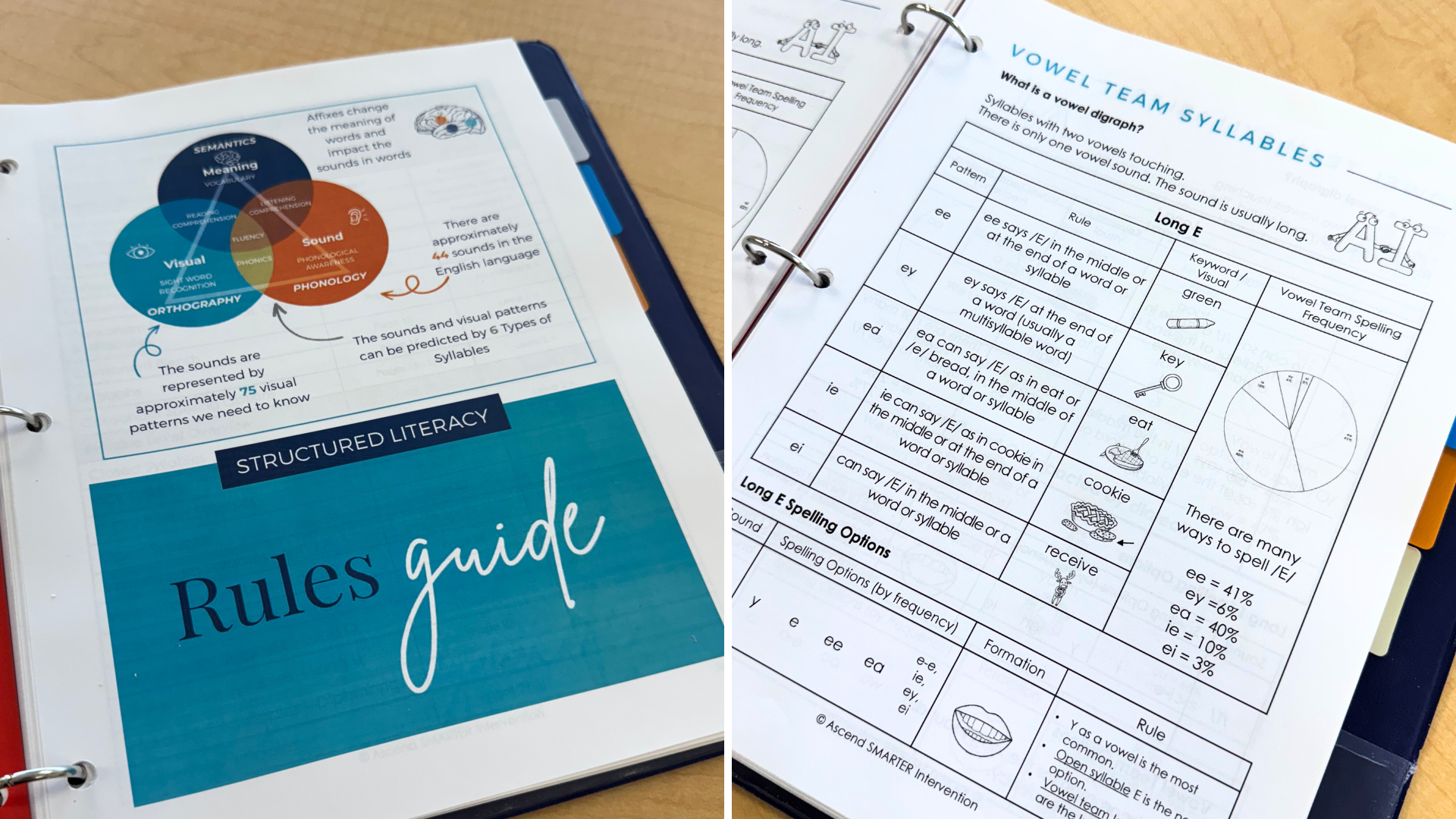Understanding the Six Syllable Types - Closed Syllables
One of the most effective practices used in evidence-based reading instruction is the process of teaching each of the syllable types and syllable division patterns.
If you have never heard of the six syllable types, don't worry - you are not alone. Check out our blog: What’s This About the Six Syllable Types.
Why teach the six syllable types?
Understanding the syllable types helps students anticipate the vowel sounds within a word. It also helps students learn to break or chunk words effectively to sound out longer words.
The Science of Reading has provided a great deal of information on the most effective, evidence-based practices in teaching reading. Teaching the six syllable types aligns with the explicit teaching of concepts. So specifically, we teach:
What is a syllable?
A syllable is a word or part of a word with one vowel sound. Understanding this definition can help us to read and spell effectively.
As we work with students, we also want to follow a systematic progression of concepts. Systematic phonics-based instruction is well-researched and has been proven to help children learn to read better than all forms of control group instruction based on quantitative meta-analyses (Ehri, L. C., Nunes, S. R., Stahl, S. A., & Willows, D. M. 2001).
A systematic progression means working from the most basic concepts and progressing to more complex concepts while continuing to systematically review the concepts taught earlier in the progression. Now, it’s important to note that our systematic progression of concepts is not necessarily the same as others’ - this is okay. It’s all about using a hierarchy and order of teaching that generally provides students with access to the tools they need as quickly as possible to be able to read as many words as possible.
We start our syllable type instruction with closed syllables. You can find more information on the other syllable types here:
What is a Closed Syllable?
A closed syllable is a syllable that ends in a consonant. The consonant comes directly after the vowel, which traps or “closes in” the vowel, making it say its short sound.
Examples:
cat → /c/ /a/ /t/ → The t closes in the a, so it says /a/ like in apple.
in → /i/ /n/ → The n closes in the i, so it says /i/ like in itch.
It doesn’t matter what letter comes before the vowel. We’re always looking at what comes after to determine if the syllable is closed. It’s also important to note that some consonants like “r” or “w” will create a different vowel sound and therefore these syllables aren’t closed.
How do we teach it (step by step)
1. Introduce the Concept with CVC Words
We start by building and reading simple CVC words (consonant-vowel-consonant) using letter tiles or a whiteboard. We guide students to see that when a consonant follows the vowel, the vowel is “closed in” and can only say its short sound.
Examples:
cap, red, sit, hop, bug
We explain that this is why we call it a closed syllable, the vowel is trapped by a consonant.
Obviously, not all of our words are made up of single syllables. But the great news is that each syllable type also has an associated syllable division pattern that helps students break up words effectively.
2. Teach Students to Spot the Pattern
Next, we help students identify closed syllables in words they read. We model how to:
Look for a single vowel followed by a consonant
Check that the vowel is saying its short sound
Confirm that the syllable ends with a consonant
We often have students mark the vowel with a breve (˘) to show the short sound.
3. Apply the Pattern to Multisyllable Words
Once students are confident with single-syllable words, we introduce multisyllable examples that include closed syllables.
Example: fantastic
We divide the word: fan / tas / tic
Each syllable:
Ends in a consonant
Has a single vowel followed by that consonant
Has the vowel saying its short sound
So all three are closed syllables:
fan → short /a/
tas → short /a/
tic → short /i/
Students begin to see that these patterns repeat, and that longer words are just built from familiar syllable parts.
4. Reinforce Through Sorting, Marking & Activities
We build fluency through:
Word and syllable sorts (closed vs. open or VCE)
Marking routines (breve for short vowels, divide syllables)
Games to keep practice engaging
We emphasize noticing and naming the pattern, not just decoding it.
What if students get stuck?
Some students:
Guess at the vowel sound based on memory or guessing
Don’t notice when a word has more than one syllable
Forget that a single vowel followed by a consonant = short sound
To support them:
Use visual anchors (charts, color-coding, hand motions)
Guide them to spot what comes after the vowel
Return to simple CVC examples to rebuild pattern recognition
These “aha” moments often come when students realize long words are just a series of small, predictable parts, so much easier!
Looking to teach closed syllables?
Depending on where you are in your teaching journey, here are a few next steps:
Just getting started?
Download our free Syllable Types Anchor Charts to introduce each syllable type visually and give your students a clear reference as they learn.
Download the Anchor Charts » Get them here!
Want games ready to go?
Want more tools and examples for syllable-type instruction?
Check out our Spotlight PD: The Reading Rules We Teach (and Why They Matter!)
This 1-hour on-demand training provides you with everything you need to help you confidently teach the rules that actually move the needle, without getting lost in all the complexity.
You’ll get a clear, research-backed framework that shows which reading rules to focus on, why they matter for the brain, and how to teach them at each level—sound, syllable, word, sentence, paragraph, and passage.
This approach is built on the science of reading and aligned with structured literacy best practices. It’s been used to support general education, intervention, and special education teams in building skill-based literacy instruction that actually sticks.
Inside the training, you’ll access:
➡️ An on-demand video
You can watch it anytime! Take the training at your own pace and revisit it as you need.
➡️ 1-hour PD certificate
The training includes a quiz + a printable certificate for 1 hour of professional development.
➡️ BONUS: Includes a printable Comprehensive Reading Rules Guide to help with lesson design, team planning, and conversations with families.









